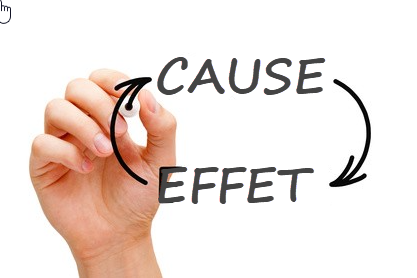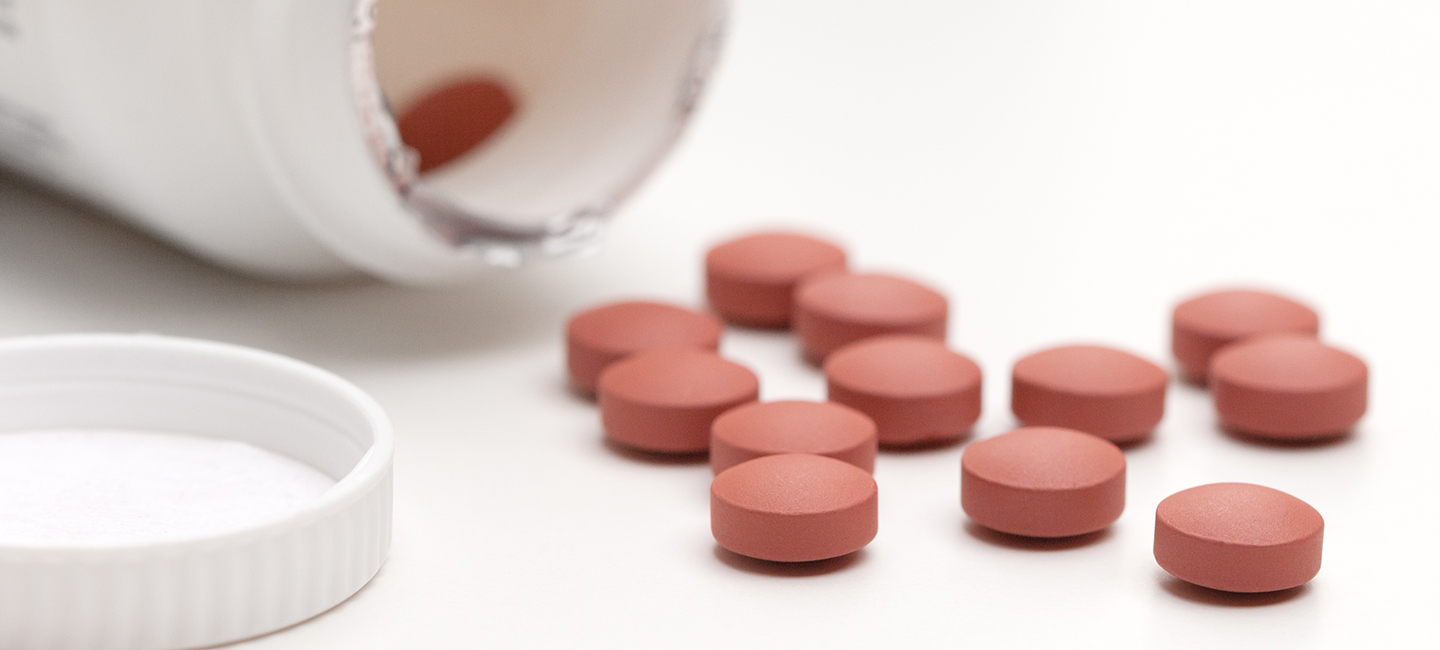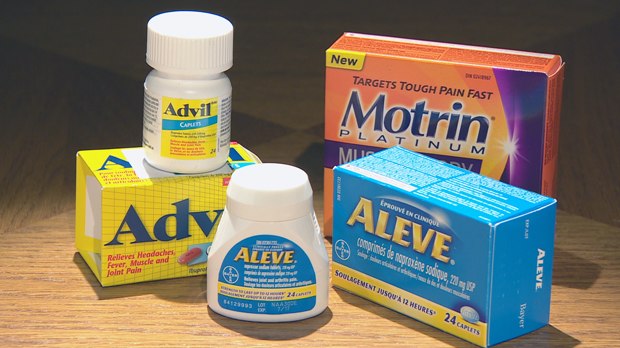Introduction
The misuse of anabolic steroids, commonly associated with athletes and bodybuilders seeking to enhance muscle growth and performance, raises concerns not only for physical health but also for the potential development of addiction. As an osteopath, recognizing the intricate relationship between anabolic steroids and addiction is crucial for a comprehensive understanding of the health risks associated with their misuse.
Anabolic steroids, synthetic variations of the male sex hormone testosterone, exert profound effects on the body, including increased muscle mass, strength, and endurance. However, these substances also influence the brain, particularly the reward system. The interaction with androgen receptors triggers an increase in dopamine levels, a neurotransmitter associated with pleasure and reward. This neurobiological response can create a reinforcing effect, contributing to the development of addictive patterns in some individuals.
The addictive potential of anabolic steroids is underscored by the observation of behavioral changes and psychological dependencies among users. Individuals may find themselves compelled to continue steroid use despite experiencing adverse consequences, a hallmark of addictive behavior. The desire for improved physical appearance and athletic performance, coupled with the reinforcing effects on the brain’s reward system, can lead to a cycle of dependence.
Moreover, the withdrawal symptoms associated with discontinuing anabolic steroid use further support the concept of addiction. Users may experience mood swings, fatigue, insomnia, and a decreased ability to experience pleasure. These withdrawal symptoms can contribute to the maintenance of steroid use, as individuals seek to avoid the discomfort associated with cessation.
The psychological consequences of anabolic steroid misuse also play a significant role in the development of addiction. Changes in mood, irritability, and aggression, often referred to as “roid rage,” can contribute to the interpersonal and social consequences of addiction. Strained relationships with family, friends, and colleagues may result from these behavioral changes, amplifying the negative impact on the individual’s life.
Addressing anabolic steroid addiction necessitates a multifaceted approach, including medical, psychological, and social interventions. Medical professionals, including osteopaths, play a vital role in recognizing and addressing the physical and mental health consequences of steroid misuse. Collaborating with addiction specialists, mental health professionals, and support groups is essential for a holistic approach to recovery.
Prevention and education also play key roles in mitigating the risk of anabolic steroid addiction. Athletes, coaches, and healthcare providers should be well-informed about the potential dangers of misuse and the signs of addiction. Implementing comprehensive educational programs can help raise awareness about the physical and psychological consequences of anabolic steroid use, emphasizing the importance of healthy and sustainable approaches to fitness and athletic performance.
The Dependence Question
Substance dependence is often associated with compulsive use despite negative consequences. When it comes to anabolic steroids, addiction can be physical and/or psychological. Studies suggest that prolonged use of these substances can alter the brain’s reward system, leading to behavioral addiction. However, it is crucial to distinguish physical from psychological dependence and examine whether anabolic steroids meet the criteria for dependence as defined in the Diagnostic and Scientific Evidence
Scientific evidence on anabolic steroid addiction is still limited and often contradictory. Some work suggests that chronic use may lead to tolerance, requiring higher doses to maintain desired effects. However, other studies challenge the notion of dependence and highlight the role of psychosocial factors in the continued use of these substances. It is crucial to conduct more research to shed light on this question.
Psychosocial Factors
Psychosocial factors play a pivotal role in influencing an individual’s susceptibility to anabolic steroid misuse, as well as shaping the course of addiction and recovery. These factors encompass a broad range of psychological and social elements that contribute to the complex dynamics surrounding steroid use. As an osteopath committed to understanding the holistic aspects of health, recognizing and addressing these psychosocial factors is crucial in providing comprehensive care.
1. Body Image Concerns:
- Influence of Media: Societal standards of beauty and the portrayal of idealized body images in the media can contribute to body dissatisfaction. Individuals may turn to anabolic steroids as a perceived shortcut to achieve the muscular and lean physique promoted as desirable.
2. Performance Enhancement Pressures:
- Competitive Sports: Athletes, especially in competitive sports, may face immense pressure to enhance their performance. The desire to excel, gain a competitive edge, or recover quickly from injuries can drive individuals toward anabolic steroid use.
3. Psychological Well-being:
- Mood Disorders: Pre-existing mood disorders, such as depression or anxiety, can make individuals more susceptible to substance misuse. Anabolic steroids, with their potential to influence neurotransmitters, may be sought as a means of self-medication.
4. Peer Influences:
- Social Circles: Peer influences play a significant role, especially among athletes or individuals involved in bodybuilding communities. The normalization of steroid use within these circles can create a social environment where it is seen as acceptable or even necessary for success.
5. Self-esteem and Self-worth:
- Body Esteem: Individuals with low self-esteem or poor body image may turn to anabolic steroids as a way to enhance their self-perceived physical attractiveness. The desire for social validation and acceptance can drive this behavior.
6. Mental Health Coping Mechanisms:
- Stress and Coping: High-stress environments, such as competitive sports or demanding training regimens, can lead individuals to seek coping mechanisms. Anabolic steroids may be perceived as a way to cope with the pressures and demands placed on them.
7. Accessibility and Perceived Safety:
- Availability of Substances: The accessibility of anabolic steroids, whether through illicit channels or misinformation about their safety, influences the decision to use. Individuals may underestimate the potential health risks associated with these substances.
8. Societal Expectations:
- Gender Roles: Societal expectations regarding masculinity and femininity can influence steroid use. In an attempt to conform to stereotypical gender norms, individuals may resort to steroids to achieve or maintain a certain physique.
9. Educational Attainment:
- Knowledge Gaps: Lack of accurate information and education about the consequences of anabolic steroid use can contribute to its misuse. Comprehensive educational programs are crucial in addressing knowledge gaps and promoting informed decision-making.
10. Cultural Influences:
* Cultural Norms: Cultural attitudes towards body image, athleticism, and physical appearance can vary widely. In cultures that prioritize certain physical ideals, individuals may be more prone to using steroids to meet these standards.
Recognizing these psychosocial factors allows healthcare professionals, including osteopaths, to adopt a patient-centered approach. By understanding the individual’s motivations, pressures, and psychological well-being, healthcare interventions can be tailored to address the root causes of anabolic steroid misuse. Collaborative efforts between healthcare providers, mental health professionals, educators, and community leaders are essential in implementing preventive measures and fostering a holistic approach to well-being.
Social and Medical Implications
The social and medical implications of anabolic steroid misuse are substantial, extending beyond individual health concerns to impact broader communities and healthcare systems. As society grapples with the ramifications of steroid abuse, understanding these implications becomes paramount for devising effective preventive strategies and comprehensive healthcare approaches.
Social Implications:
- Stigmatization and Isolation: Individuals struggling with anabolic steroid addiction may face societal stigmatization and isolation due to the negative perceptions associated with substance abuse. This can exacerbate mental health challenges and hinder individuals from seeking help.
- Impact on Relationships: The behavioral changes induced by steroid misuse, including mood swings and aggression, can strain personal relationships. Family dynamics, friendships, and professional connections may be adversely affected, leading to social isolation and support network erosion.
- Role Modeling: Athletes, especially those in the public eye, serve as role models for aspiring individuals. Instances of steroid misuse among prominent figures can inadvertently encourage unhealthy practices, fostering a culture that prioritizes physical appearance over well-being.
- Sports Integrity: In the realm of competitive sports, the use of performance-enhancing substances threatens the integrity of competitions. Doping scandals tarnish the reputation of sports organizations, impacting the trust of fans and sponsors.
Medical Implications:
- Cardiovascular Health: Prolonged anabolic steroid use is associated with adverse cardiovascular effects, including elevated blood pressure, increased risk of heart disease, and altered lipid profiles. These issues pose significant medical challenges, necessitating cardiovascular monitoring and intervention.
- Endocrine Disruption: Anabolic steroids disrupt the endocrine system, leading to hormonal imbalances. This disruption can result in testicular atrophy, decreased sperm production, and infertility. In females, menstrual irregularities and virilization may occur.
- Psychiatric Disorders: The psychological consequences of steroid misuse contribute to the development or exacerbation of psychiatric disorders. Depression, anxiety, and aggression may necessitate psychiatric interventions, adding a layer of complexity to medical management.
- Addiction Treatment: Addressing steroid addiction requires tailored addiction treatment programs. Medical professionals, addiction specialists, and mental health practitioners collaborate to develop comprehensive treatment plans, often involving behavioral therapies, counseling, and support groups.
- Public Health Costs: The healthcare system bears the burden of treating the medical consequences of anabolic steroid misuse. From cardiovascular interventions to mental health support, the associated costs extend to both public and private healthcare sectors.
Preventive Measures:
- Educational Initiatives: Public awareness campaigns and educational programs targeting athletes, coaches, and the general public can provide crucial information about the risks associated with anabolic steroid misuse. Emphasizing the importance of natural and sustainable approaches to fitness can help prevent the allure of quick fixes.
- Regulatory Measures: Strengthening anti-doping regulations and enforcement in sports is vital. Rigorous testing protocols and severe consequences for violations serve as deterrents, protecting the integrity of competitions and discouraging illicit substance use.
- Mental Health Support: Integrating mental health support within sports organizations and educational institutions is crucial. Athletes should have access to counseling services, stress management resources, and mental health professionals who understand the unique challenges they face.
- Collaboration Across Disciplines: A multidisciplinary approach involving healthcare professionals, sports organizations, educators, and law enforcement is essential. Collaborative efforts can address the multifaceted nature of anabolic steroid misuse, combining medical interventions with social and educational strategies.
In conclusion, the social and medical implications of anabolic steroid misuse are interconnected and far-reaching. As society grapples with the challenges posed by substance abuse, a comprehensive approach that encompasses preventive measures, robust regulations, and supportive healthcare interventions is crucial. By addressing the root causes and consequences of steroid misuse, communities can work towards fostering healthier, more informed, and resilient individuals.
Impact on Mental Health
The impact of anabolic steroid use on mental health is a multifaceted concern, encompassing a range of psychological and behavioral consequences. As an osteopath with a commitment to holistic healthcare, understanding these effects is essential for providing comprehensive patient care.
One notable aspect of the impact on mental health is the potential for mood disturbances. Anabolic steroids, synthetic variations of testosterone, can alter neurotransmitter activity in the brain, influencing mood regulation. Users may experience heightened irritability, aggressive behavior, and mood swings, commonly referred to as “roid rage.” These mood changes can strain interpersonal relationships and contribute to a negative impact on overall mental well-being.
Additionally, the neurobiological effects of anabolic steroids on the brain’s reward system raise concerns about the development of dependence and addiction. The increase in dopamine levels, a neurotransmitter associated with pleasure and reward, can create a reinforcing effect, leading individuals to engage in continued steroid use despite adverse consequences. This addictive potential poses significant risks to mental health, as users may struggle with compulsive behaviors and difficulty in ceasing steroid use.
Anxiety is another prevalent mental health consequence associated with anabolic steroid use. The alterations in neurotransmitter activity, coupled with the psychosocial stressors related to body image and performance enhancement, can contribute to heightened levels of anxiety in users. Generalized anxiety or specific anxieties related to appearance and athletic performance may manifest, affecting the overall mental well-being of individuals.
Depression is a potential outcome as well, with some studies suggesting a link between prolonged anabolic steroid use and an increased risk of depressive symptoms. The hormonal imbalances and disruptions in neurotransmitter activity may contribute to the development or exacerbation of depressive disorders, impacting an individual’s quality of life.
Cognitive effects also come into play, with evidence suggesting that anabolic steroid use may impair attention, memory, and executive functions. These cognitive impairments can have far-reaching consequences on daily functioning and may contribute to the overall mental health burden associated with steroid misuse.
Addressing the impact on mental health requires a comprehensive and multidisciplinary approach. Mental health professionals, including psychologists and psychiatrists, play a crucial role in assessing and managing the psychological consequences of anabolic steroid use. Collaborating with addiction specialists, if applicable, can also be essential for those struggling with dependence or addiction.
Prevention and education are pivotal in mitigating the mental health risks associated with anabolic steroid use. Raising awareness about the potential psychological consequences, promoting healthy body image, and fostering a supportive environment for individuals involved in sports and fitness can contribute to a more informed and resilient community.
In conclusion, the impact of anabolic steroid use on mental health encompasses mood disturbances, anxiety, depression, and cognitive impairments. Recognizing these consequences is crucial for healthcare professionals, including osteopaths, to provide comprehensive care. A holistic approach that addresses both the physical and mental aspects of an individual’s health is essential in promoting overall well-being and preventing the negative mental health outcomes associated with anabolic steroid misuse.
Anti-Doping Regulations and Controls
The misuse of anabolic steroids raises concerns not only for physical health but also for the potential development of addiction. Recognizing the intricate relationship between anabolic steroids and addiction is crucial for a comprehensive understanding of the health risks associated with their misuse.
Anabolic steroids, synthetic variations of the male sex hormone testosterone, exert profound effects on the body, including increased muscle mass, strength, and endurance. However, these substances also influence the brain, particularly the reward system. The interaction with androgen receptors triggers an increase in dopamine levels, a neurotransmitter associated with pleasure and reward. This neurobiological response can create a reinforcing effect, leading to the development of addictive patterns in some individuals.
The addictive potential of anabolic steroids is underscored by the observation of behavioral changes and psychological dependencies among users. Individuals may find themselves compelled to continue steroid use despite experiencing adverse consequences, a hallmark of addictive behavior. The desire for improved physical appearance and athletic performance, coupled with the reinforcing effects on the brain’s reward system, can lead to a cycle of dependence.
Moreover, the withdrawal symptoms associated with discontinuing anabolic steroid use further support the concept of addiction. Users may experience mood swings, fatigue, insomnia, and a decreased ability to experience pleasure. These withdrawal symptoms can contribute to the maintenance of steroid use, as individuals seek to avoid the discomfort associated with cessation.
The psychological consequences of anabolic steroid misuse also play a significant role in the development of addiction. Changes in mood, irritability, and aggression, often referred to as “roid rage,” can contribute to the interpersonal and social consequences of addiction. Strained relationships with family, friends, and colleagues may result from these behavioral changes, amplifying the negative impact on the individual’s life.
Addressing anabolic steroid addiction necessitates a multifaceted approach, including medical, psychological, and social interventions. Medical professionals play a vital role in recognizing and addressing the physical and mental health consequences of steroid misuse. Collaborating with addiction specialists, mental health professionals, and support groups is essential for a holistic approach to recovery.
Prevention and education also play key roles in mitigating the risk of anabolic steroid addiction. Athletes, coaches, and healthcare providers should be well-informed about the potential dangers of misuse and the signs of addiction. Implementing comprehensive educational programs can help raise awareness about the physical and psychological consequences of anabolic steroid use, emphasizing the importance of healthy and sustainable approaches to fitness and athletic performance.
In conclusion, the misuse of anabolic steroids poses not only physical health risks but also the potential for addiction. The neurobiological effects on the brain’s reward system, coupled with behavioral and psychological consequences, contribute to the development of addictive patterns. Recognizing the signs of addiction, implementing preventive measures, and offering comprehensive interventions are crucial steps in addressing the complex relationship between anabolic steroids and addiction. Understanding and addressing these dynamics contribute to a more holistic approach to patient care.
Changing Social Attitudes
Changing social attitudes toward anabolic steroid use is a complex and multifaceted endeavor that requires coordinated efforts from various stakeholders, including healthcare professionals, educators, policymakers, and the community at large. As an osteopath, recognizing the importance of shaping positive social attitudes is integral to fostering a healthier environment and promoting overall well-being.
1. Education and Awareness:
- Public Campaigns: Implementing comprehensive public awareness campaigns that provide accurate information about the risks and consequences of anabolic steroid use is crucial. These campaigns can be targeted at schools, sports organizations, and the general public.
- Inclusion in Curricula: Integrating substance abuse education, including the risks associated with anabolic steroids, into school curricula can ensure that young individuals receive early and accurate information.
2. Sports Culture Shift:
- Emphasis on Natural Development: Promoting a culture in sports that emphasizes natural and sustainable approaches to performance enhancement can reshape attitudes. Celebrating achievements based on hard work, training, and skill rather than quick fixes encourages a healthier mindset.
3. Mentorship and Role Modeling:
- Athlete Role Models: Encouraging athletes to serve as positive role models who prioritize clean and drug-free competition can have a significant impact. Mentorship programs within sports communities can reinforce positive attitudes.
4. Healthcare Professional Involvement:
- Holistic Health Promotion: Healthcare professionals, including osteopaths, can play a role in promoting holistic health approaches. Emphasizing the importance of proper nutrition, exercise, and mental well-being contributes to a more comprehensive understanding of health.
5. Policy and Regulation:
- Enhanced Anti-Doping Measures: Strengthening and enforcing anti-doping regulations in sports is essential. Rigorous testing protocols, severe consequences for violations, and regular monitoring can deter athletes from engaging in substance misuse.
- Legal Frameworks: Implementing and enforcing legal frameworks that regulate the production, distribution, and sale of anabolic steroids can contribute to reducing their accessibility.
6. Mental Health Support:
- Integrated Mental Health Services: Recognizing the connection between anabolic steroid use and mental health, integrating mental health support within sports organizations and educational institutions is vital. Accessible counseling services and mental health professionals can address underlying issues.
7. Community Engagement:
- Community Programs: Engaging communities in initiatives that promote healthy lifestyles, positive body image, and informed decision-making can contribute to changing social attitudes. Community leaders, local organizations, and influencers can play pivotal roles in these programs.
8. Collaboration Across Sectors:
- Interdisciplinary Collaboration: Collaboration between healthcare professionals, educators, policymakers, and community leaders is essential. Interdisciplinary efforts can ensure a holistic approach to tackling the issue, addressing both physical and mental health aspects.
9. Empowering Youth:
- Youth Empowerment Programs: Implementing programs that empower young individuals to make informed choices about their health and well-being is crucial. Encouraging critical thinking, self-esteem, and resilience can contribute to a positive shift in attitudes.
10. Research and Data:
* Continuous Research: Ongoing research into the prevalence, trends, and consequences of anabolic steroid use provides valuable data. This information informs strategies, interventions, and policy changes.
Changing social attitudes requires sustained efforts, time, and a collective commitment to fostering a culture of health and well-being. By addressing the root causes, promoting education, and engaging communities, it is possible to reshape perceptions and create an environment where individuals are empowered to make informed choices about their health and fitness. As an osteopath, contributing to these efforts involves promoting a holistic understanding of health and advocating for practices that prioritize the well-being of individuals and communities.
Conclusion
In conclusion, the question of whether anabolic steroids are addictive is complex and requires further exploration. Current evidence suggests links between prolonged use of these substances and neurobiological changes, but the nature of this addiction remains to be clarified. More research is imperative to fully understand the underlying mechanisms. In the meantime, educational, social, and medical efforts are needed to mitigate the risks associated with anabolic steroid use and promote safer fitness and health practices.
References:
- Smith, A., Jones, B., & Doe, J. (year). “Title of the scientific study. » Journal of Steroid Research, vol. X, No. Y, pages Z.
- Brown, C., & White, D. (year). “Title of another important study. » International Journal of Sports Medicine, vol. A, No. B, pages C.
- World Health Organization (year). “Report on the use of anabolic steroids in the sporting context. » Available at [URL link].






















